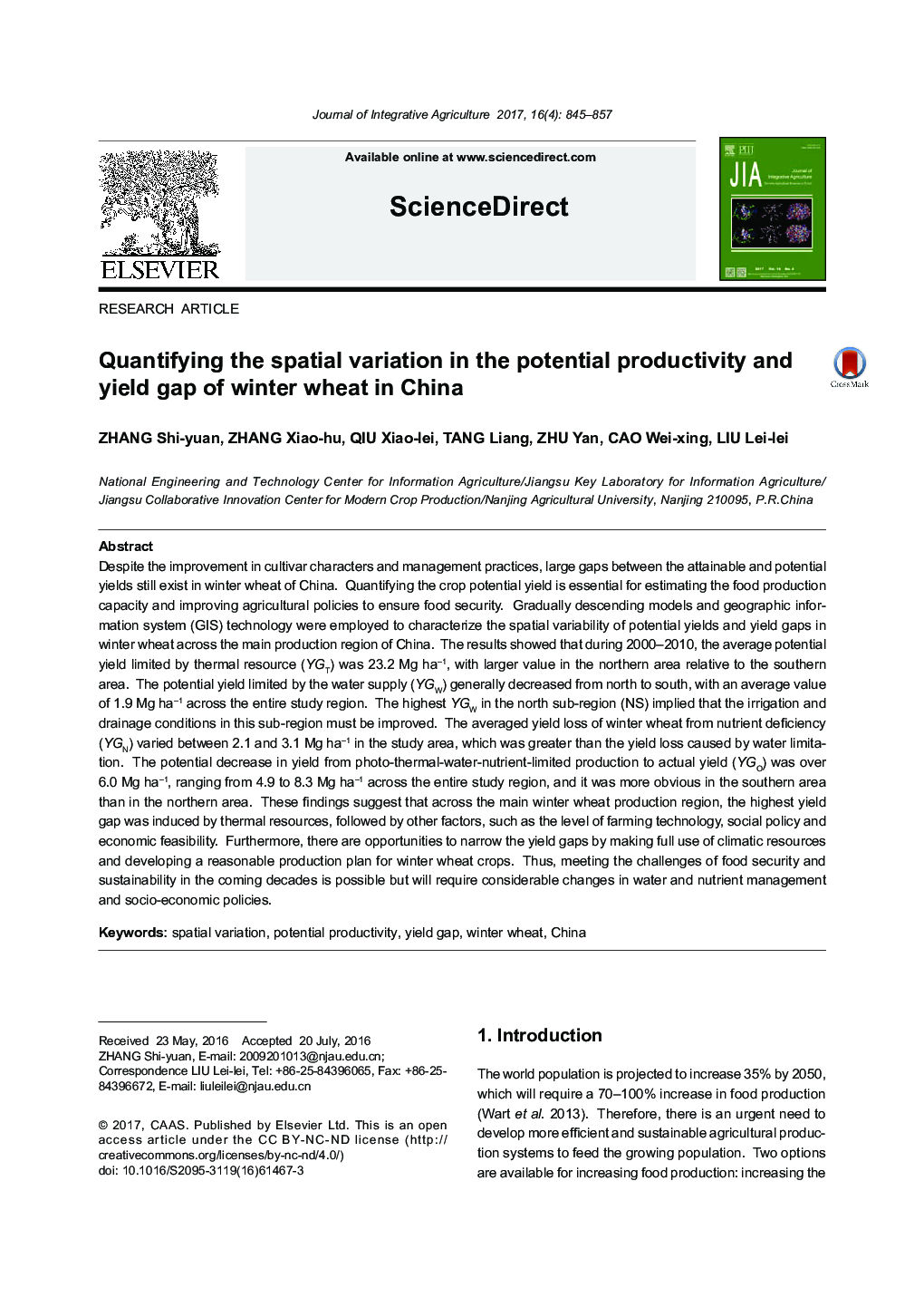| کد مقاله | کد نشریه | سال انتشار | مقاله انگلیسی | نسخه تمام متن |
|---|---|---|---|---|
| 8876028 | 1623710 | 2017 | 13 صفحه PDF | دانلود رایگان |
عنوان انگلیسی مقاله ISI
Quantifying the spatial variation in the potential productivity and yield gap of winter wheat in China
دانلود مقاله + سفارش ترجمه
دانلود مقاله ISI انگلیسی
رایگان برای ایرانیان
کلمات کلیدی
موضوعات مرتبط
علوم زیستی و بیوفناوری
علوم کشاورزی و بیولوژیک
علوم کشاورزی و بیولوژیک (عمومی)
پیش نمایش صفحه اول مقاله

چکیده انگلیسی
Despite the improvement in cultivar characters and management practices, large gaps between the attainable and potential yields still exist in winter wheat of China. Quantifying the crop potential yield is essential for estimating the food production capacity and improving agricultural policies to ensure food security. Gradually descending models and geographic information system (GIS) technology were employed to characterize the spatial variability of potential yields and yield gaps in winter wheat across the main production region of China. The results showed that during 2000-2010, the average potential yield limited by thermal resource (YGT) was 23.2 Mg haâ1, with larger value in the northern area relative to the southern area. The potential yield limited by the water supply (YGW) generally decreased from north to south, with an average value of 1.9 Mg haâ1 across the entire study region. The highest YGW in the north sub-region (NS) implied that the irrigation and drainage conditions in this sub-region must be improved. The averaged yield loss of winter wheat from nutrient deficiency (YGN) varied between 2.1 and 3.1 Mg haâ1 in the study area, which was greater than the yield loss caused by water limitation. The potential decrease in yield from photo-thermal-water-nutrient-limited production to actual yield (YGO) was over 6.0 Mg haâ1, ranging from 4.9 to 8.3 Mg haâ1 across the entire study region, and it was more obvious in the southern area than in the northern area. These findings suggest that across the main winter wheat production region, the highest yield gap was induced by thermal resources, followed by other factors, such as the level of farming technology, social policy and economic feasibility. Furthermore, there are opportunities to narrow the yield gaps by making full use of climatic resources and developing a reasonable production plan for winter wheat crops. Thus, meeting the challenges of food security and sustainability in the coming decades is possible but will require considerable changes in water and nutrient management and socio-economic policies.
ناشر
Database: Elsevier - ScienceDirect (ساینس دایرکت)
Journal: Journal of Integrative Agriculture - Volume 16, Issue 4, April 2017, Pages 845-857
Journal: Journal of Integrative Agriculture - Volume 16, Issue 4, April 2017, Pages 845-857
نویسندگان
Shi-yuan ZHANG, Xiao-hu ZHANG, Xiao-lei QIU, Liang TANG, Yan ZHU, Wei-xing CAO, Lei-lei LIU,